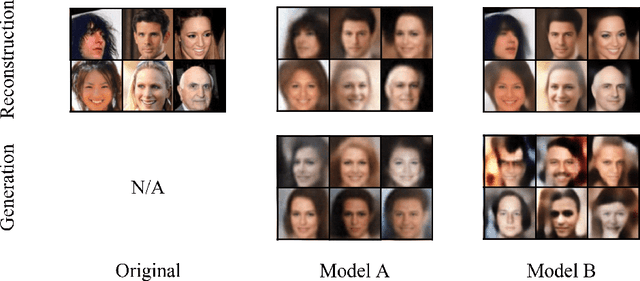Seunghwan Kim
Neural Clustering for Prefractured Mesh Generation in Real-time Object Destruction
Feb 07, 2025
Abstract:Prefracture method is a practical implementation for real-time object destruction that is hardly achievable within performance constraints, but can produce unrealistic results due to its heuristic nature. To mitigate it, we approach the clustering of prefractured mesh generation as an unordered segmentation on point cloud data, and propose leveraging the deep neural network trained on a physics-based dataset. Our novel paradigm successfully predicts the structural weakness of object that have been limited, exhibiting ready-to-use results with remarkable quality.
Enhancing Exploration Efficiency using Uncertainty-Aware Information Prediction
Dec 17, 2024Abstract:Autonomous exploration is a crucial aspect of robotics, enabling robots to explore unknown environments and generate maps without prior knowledge. This paper proposes a method to enhance exploration efficiency by integrating neural network-based occupancy grid map prediction with uncertainty-aware Bayesian neural network. Uncertainty from neural network-based occupancy grid map prediction is probabilistically integrated into mutual information for exploration. To demonstrate the effectiveness of the proposed method, we conducted comparative simulations within a frontier exploration framework in a realistic simulator environment against various information metrics. The proposed method showed superior performance in terms of exploration efficiency.
Design and Identification of Keypoint Patches in Unstructured Environments
Oct 01, 2024



Abstract:Reliable perception of targets is crucial for the stable operation of autonomous robots. A widely preferred method is keypoint identification in an image, as it allows direct mapping from raw images to 2D coordinates, facilitating integration with other algorithms like localization and path planning. In this study, we closely examine the design and identification of keypoint patches in cluttered environments, where factors such as blur and shadows can hinder detection. We propose four simple yet distinct designs that consider various scale, rotation and camera projection using a limited number of pixels. Additionally, we customize the Superpoint network to ensure robust detection under various types of image degradation. The effectiveness of our approach is demonstrated through real-world video tests, highlighting potential for vision-based autonomous systems.
Beta-Sigma VAE: Separating beta and decoder variance in Gaussian variational autoencoder
Sep 14, 2024



Abstract:Variational autoencoder (VAE) is an established generative model but is notorious for its blurriness. In this work, we investigate the blurry output problem of VAE and resolve it, exploiting the variance of Gaussian decoder and $\beta$ of beta-VAE. Specifically, we reveal that the indistinguishability of decoder variance and $\beta$ hinders appropriate analysis of the model by random likelihood value, and limits performance improvement by omitting the gain from $\beta$. To address the problem, we propose Beta-Sigma VAE (BS-VAE) that explicitly separates $\beta$ and decoder variance $\sigma^2_x$ in the model. Our method demonstrates not only superior performance in natural image synthesis but also controllable parameters and predictable analysis compared to conventional VAE. In our experimental evaluation, we employ the analysis of rate-distortion curve and proxy metrics on computer vision datasets. The code is available on https://github.com/overnap/BS-VAE
Diversity and stylization of the contemporary user-generated visual arts in the complexity-entropy plane
Aug 21, 2024



Abstract:The advent of computational and numerical methods in recent times has provided new avenues for analyzing art historiographical narratives and tracing the evolution of art styles therein. Here, we investigate an evolutionary process underpinning the emergence and stylization of contemporary user-generated visual art styles using the complexity-entropy (C-H) plane, which quantifies local structures in paintings. Informatizing 149,780 images curated in DeviantArt and Behance platforms from 2010 to 2020, we analyze the relationship between local information of the C-H space and multi-level image features generated by a deep neural network and a feature extraction algorithm. The results reveal significant statistical relationships between the C-H information of visual artistic styles and the dissimilarities of the multi-level image features over time within groups of artworks. By disclosing a particular C-H region where the diversity of image representations is noticeably manifested, our analyses reveal an empirical condition of emerging styles that are both novel in the C-H plane and characterized by greater stylistic diversity. Our research shows that visual art analyses combined with physics-inspired methodologies and machine learning, can provide macroscopic insights into quantitatively mapping relevant characteristics of an evolutionary process underpinning the creative stylization of uncharted visual arts of given groups and time.
Autoregressive Language Models For Estimating the Entropy of Epic EHR Audit Logs
Nov 26, 2023



Abstract:EHR audit logs are a highly granular stream of events that capture clinician activities, and is a significant area of interest for research in characterizing clinician workflow on the electronic health record (EHR). Existing techniques to measure the complexity of workflow through EHR audit logs (audit logs) involve time- or frequency-based cross-sectional aggregations that are unable to capture the full complexity of a EHR session. We briefly evaluate the usage of transformer-based tabular language model (tabular LM) in measuring the entropy or disorderedness of action sequences within workflow and release the evaluated models publicly.
 Add to Chrome
Add to Chrome Add to Firefox
Add to Firefox Add to Edge
Add to Edge